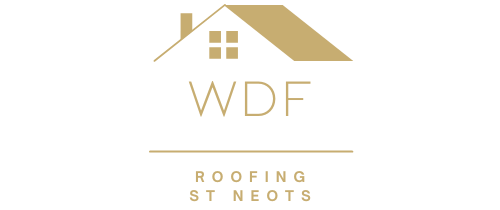Flat Roof Repair Techniques That Prevent Recurring Leaks
Flat roofs are a popular choice for both residential and commercial properties, offering practical advantages in design and space usage. However, they are also more susceptible to water pooling and leaks due to their minimal slope. At WDF Roofing St Neots, we understand how frustrating recurring leaks can be, which is why we specialise in flat roof repair techniques that not only address current issues but also prevent them from happening again. In this blog, we will explore the best practices for flat roof repairs and how professional solutions can save you time, money, and hassle.
Why Flat Roofs Are Prone to Leaks
Before diving into the repair techniques, it’s essential to understand why flat roofs are particularly vulnerable to leaks:
- Water Pooling: Unlike pitched roofs, flat roofs do not have a steep incline for water to run off. This can result in water pooling, which, over time, weakens the roofing material and leads to leaks.
- Poor Drainage: If a flat roof’s drainage system is inadequate or clogged, water can accumulate and seep through the roof, causing damage to the insulation and structure below.
- Roofing Material Wear: UV exposure, weather conditions, and general wear and tear can cause flat roofing materials to crack or blister, creating entry points for water.
Key Repair Techniques to Prevent Recurring Leaks
At WDF Roofing St Neots, we employ a range of flat roof repair techniques designed to stop leaks and prevent them from returning. Here are some of the most effective methods:
- Re-Sealing Seams and Joints Flat roofs often have seams where roofing materials overlap or meet other structures like chimneys, vents, or skylights. These seams are prone to wear and can become compromised over time. By resealing these areas with high-quality sealants or adhesive tapes, we can ensure a watertight finish that prevents leaks from developing in these vulnerable spots.
- Installing a Liquid Waterproof Membrane A liquid waterproof membrane provides a seamless, flexible, and highly durable solution for flat roofs. This technique involves applying a liquid coating directly onto the roof surface, which cures to form a continuous membrane without any joints or seams. This not only prevents water ingress but also adds an additional layer of protection against UV damage and general wear. Liquid membranes are particularly effective for older roofs or those with multiple repairs.
- Replacing Damaged Flashing Flashing is used to seal areas where the roof meets walls, parapets, or other structures. Over time, flashing can become corroded or loose, leading to water penetration. Replacing or repairing flashing with high-quality, rust-resistant materials is essential for ensuring that these crucial areas remain watertight. Properly installed flashing is one of the best defences against recurring leaks.
- Improving Roof Drainage Poor drainage is one of the primary causes of recurring leaks on flat roofs. We assess the existing drainage system to identify any blockages or design flaws that may be causing water to pool. If necessary, we install additional drainage outlets or adjust the roof’s slope to encourage water to flow more efficiently. Ensuring proper drainage is a long-term solution to preventing leaks caused by standing water.
- Replacing Worn or Damaged Roof Membranes If your flat roof’s membrane has deteriorated significantly, patching individual sections may not be enough. In such cases, replacing the membrane with a new, durable material is the best option to prevent future leaks. Materials like EPDM (Ethylene Propylene Diene Monomer) rubber, TPO (Thermoplastic Polyolefin), and bitumen-based systems are popular choices for flat roofs due to their strength, flexibility, and longevity. A properly installed new membrane will provide years of protection against leaks.
- Regular Maintenance and Inspections One of the most effective ways to prevent recurring leaks is through regular roof maintenance and inspections. At WDF Roofing St Neots, we offer maintenance services that include cleaning gutters and drains, checking for any damage, and resealing vulnerable areas. By addressing minor issues early on, you can avoid more extensive repairs down the line.
Why Professional Flat Roof Repairs Are Essential
While it may be tempting to try DIY repairs on a flat roof, professional services ensure the job is done correctly the first time, preventing further damage and saving you money in the long run. Here’s why professional flat roof repairs are crucial:
- Expert Knowledge: Our experienced team knows how to diagnose the root causes of leaks and implement the most effective repair techniques. We also ensure that all repairs comply with building regulations and industry standards.
- Access to High-Quality Materials: Professional roofers have access to advanced materials that are more durable and longer-lasting than those typically available for DIY projects. Using the right materials ensures that repairs provide long-term protection.
- Long-Term Cost Savings: While DIY repairs may seem cheaper in the short term, improper repairs can lead to more significant issues that require costly fixes later on. Professional repairs not only address the current problem but also prevent future issues, saving you money in the long run.
Conclusion
Recurring leaks in flat roofs can be a major inconvenience, but with the right repair techniques, they can be resolved once and for all. At WDF Roofing St Neots, we offer expert flat roof repair services that prioritise durability and long-term protection. Whether it’s installing a liquid membrane, resealing seams, or improving drainage, our team ensures your flat roof remains leak-free for years to come.
Call us on: 01480 776 292
Click here to find out more about WDF Roofing St Neots
Click here to complete our contact form and see how we can help with your roofing needs.

